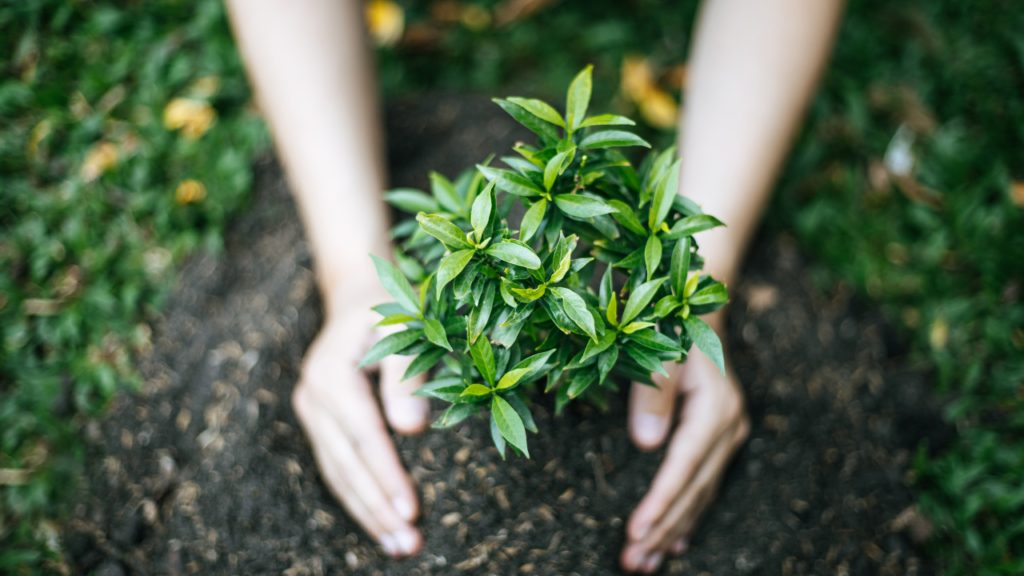Clementine trees are a type of citrus tree that produce small, sweet, and seedless oranges that are perfect for snacking or juicing. Clementine trees are also attractive and fragrant, and can add a touch of tropical beauty to your garden or home. If you love clementines and want to grow your own, you might be wondering how to care for clementine trees. In this blog post, we will show you how to grow and care for clementine trees, from planting to harvesting, and answer some common questions along the way.
What is a Clementine Tree?
A clementine tree is a hybrid of a mandarin orange and a sweet orange, and belongs to the citrus family. Clementine trees are believed to have originated in Algeria in the early 20th century, and are named after Father Clement Rodier, who discovered them in his orphanage garden. Clementine trees are also known as Christmas oranges, because they ripen in the winter and are often sold in festive boxes or bags.
Clementine trees are evergreen and can grow up to 25 feet tall, but are often grafted onto dwarf rootstocks to keep them smaller and more manageable. Clementine trees have glossy green leaves, white flowers, and thorny branches. The fruits are round, slightly flattened, and have a thin, loose, and easy-to-peel skin. The flesh is juicy, sweet, and usually seedless, although some varieties may have a few seeds.
Clementine trees are self-pollinating, which means they do not need another tree to produce fruit. However, cross-pollination with other citrus trees can result in seeds or changes in fruit quality. Clementine trees are also cold-hardy and can tolerate temperatures as low as 40°F (4°C), but they prefer warm and sunny climates.

Also Read:
How to Plant a Clementine Tree
You can plant a clementine tree either outdoors or indoors, depending on your climate and space. Here are the steps for planting a clementine tree in both scenarios:
Outdoors
- Choose a location that gets at least 6 hours of direct sunlight per day, and has well-drained, sandy, and slightly acidic soil. Avoid low-lying areas that are prone to frost or flooding.
- Dig a hole that is twice as wide and deep as the root ball of your clementine tree. Loosen the soil at the bottom and sides of the hole, and mix in some organic matter, such as compost or manure, to improve the soil quality and drainage.
- Remove the clementine tree from its nursery pot, and gently loosen the roots. Place the tree in the center of the hole, and make sure the top of the root ball is level with the ground. Fill the hole with soil, and tamp it down firmly. Water the tree well to settle the soil and eliminate air pockets.
- Add a layer of mulch around the base of the tree, leaving a few inches of space around the trunk. Mulch can help retain moisture, regulate temperature, and prevent weeds. You can use organic materials, such as bark, straw, or leaves, as mulch.
- Stake the tree if it is young or unstable, and tie it loosely with a soft material, such as cloth or rubber. Staking can help support the tree and protect it from wind damage. Remove the stake once the tree is established and strong enough to stand on its own.
Indoors
- Choose a container that is at least 18 inches in diameter and has drainage holes at the bottom. You can use a plastic, ceramic, or metal pot, but avoid terracotta pots, as they can dry out the soil too quickly. You can also use a self-watering or sub-irrigated planter, which can help prevent overwatering or underwatering.
- Fill the container with a potting mix that is designed for citrus trees, or make your own by mixing equal parts of peat moss, perlite, and sand. You can also add some organic matter, such as compost or manure, to enrich the soil and improve the drainage.
- Remove the clementine tree from its nursery pot, and gently loosen the roots. Place the tree in the center of the container, and make sure the top of the root ball is 1-2 inches below the rim. Fill the container with soil, and tamp it down firmly. Water the tree well to settle the soil and eliminate air pockets.
- Place the container in a sunny spot, such as a south-facing window, or under a grow light. Clementine trees need at least 6 hours of direct sunlight per day, or 12-14 hours of artificial light, to thrive and produce fruit. You can also move the container outdoors during the summer, as long as the temperature is above 50°F (10°C).
- Rotate the container every week or so, to ensure even growth and exposure to light. Clementine trees tend to grow towards the light source, and can become lopsided or leggy if not rotated regularly.

How to Care for a Clementine Tree
Once you have planted your clementine tree, you need to provide it with proper care and maintenance, such as watering, fertilizing, pruning, and pest control. Here are some tips on how to care for a clementine tree:
Watering
Clementine trees need regular and consistent watering, but not too much or too little. Overwatering can cause root rot and fungal diseases, while underwatering can cause leaf drop and fruit drop. The best way to water a clementine tree is to check the soil moisture before watering, and water only when the top 2 inches of soil feel dry to the touch. Water deeply and thoroughly, until water drains out of the bottom of the container or the hole. Avoid wetting the leaves or the trunk, as this can cause fungal infections or sunburn. You can also use a moisture meter or a self-watering system to monitor and regulate the water level.
The frequency and amount of watering will depend on the size of the tree, the size of the container, the type of soil, the weather, and the season. Generally, clementine trees need more water during the summer and less water during the winter. A good rule of thumb is to water once a week during the growing season, and once every 2-3 weeks during the dormant season. However, you should always check the soil moisture before watering, and adjust accordingly.
Fertilizing
Clementine trees need regular and balanced fertilization, but not too much or too often. Overfertilizing can cause leaf burn and fruit drop, while underfertilizing can cause poor growth and fruit quality. The best way to fertilize a clementine tree is to use a fertilizer that is specially formulated for citrus trees, or a general-purpose fertilizer that has a balanced ratio of nitrogen, phosphorus, and potassium, such as 10-10-10 or 20-20-20. You can also use organic fertilizers, such as compost, manure, or fish emulsion, to enrich the soil and provide micronutrients.
The frequency and amount of fertilizing will depend on the size of the tree, the size of the container, the type of soil, and the stage of growth. Generally, clementine trees need more fertilizer during the spring and summer, and less fertilizer during the fall and winter. A good rule of thumb is to fertilize once every 2 months during the growing season, and once every 4 months during the dormant season. However, you should always follow the instructions on the fertilizer label, and adjust accordingly.

Pruning
Clementine trees need occasional and light pruning, but not too much or too often. Overpruning can cause stress and reduce fruit production, while underpruning can cause overcrowding and disease. The best way to prune a clementine tree is to use sharp and clean pruning tools, such as shears, scissors, or knives, and make clean and smooth cuts. You should also disinfect your tools before and after pruning, to prevent the spread of diseases.
The purpose and timing of pruning will depend on the size and shape of the tree and the desired outcome. Generally, clementine trees need three types of pruning: shaping, thinning, and harvesting.
- Shaping pruning is done to maintain the desired size and shape of the tree, and to remove any dead, damaged, or diseased branches. Shaping pruning is best done in the late winter or early spring, before the new growth starts. You can also do some light shaping pruning throughout the year, to remove any unwanted or unruly branches. To shape prune a clementine tree, you should cut back the branches to a healthy bud or branch, and follow the natural form of the tree. You should also avoid cutting more than one-third of the tree at a time, as this can cause shock and reduce fruit production.
- Thinning pruning is done to improve the air circulation and light penetration within the tree, and to remove any weak, crossing, or competing branches. Thinning pruning is best done in the late spring or early summer, after the tree has bloomed and set fruit. You can also do some light thinning pruning throughout the year, to remove any excess or unwanted branches. To thin prune a clementine tree, you should cut off the branches at their base, and leave some space between the remaining branches. You should also avoid cutting more than one-fourth of the tree at a time, as this can cause stress and reduce fruit quality.
- Harvesting pruning is carried out to remove the ripe fruits from the tree and to encourage new growth and fruit production. The optimal time for harvesting pruning is late fall or early winter when the fruits are fully colored and sweet. Additionally, you can perform some light pruning.
What is the best time to plant clementine trees?
The best time to plant clementine trees depends on your climate and location. According to the web search results1234, clementine trees are best planted in spring or fall, when the temperatures are mild and the soil is moist. Planting in spring allows the tree to establish its roots before the summer heat while planting in fall allows the tree to acclimate to the winter cold. However, if you live in a very cold or hot area, you may want to plant your clementine tree indoors or in a container and move it outdoors when the weather is suitable. Clementine trees need at least 6 hours of direct sunlight per day, and well-drained, sandy, and slightly acidic soil. You should also avoid planting your clementine tree in low-lying areas that are prone to frost or flooding.
How do I prepare the soil for planting clementine trees?
To prepare the soil for planting clementine trees, you need to make sure it is well-drained, sandy, and slightly acidic. You can follow these steps:
- Choose a location that gets at least 6 hours of direct sunlight per day, and has well-drained, sandy, and slightly acidic soil. Avoid low-lying areas that are prone to frost or flooding.
- Dig a hole that is twice as wide and deep as the root ball of your clementine tree. Loosen the soil at the bottom and sides of the hole, and mix in some organic matter, such as compost or manure, to improve the soil quality and drainage.
- Remove the clementine tree from its nursery pot, and gently loosen the roots. Place the tree in the center of the hole, and make sure the top of the root ball is level with the ground. Fill the hole with soil, and tamp it down firmly. Water the tree well to settle the soil and eliminate air pockets.
- Add a layer of mulch around the base of the tree, leaving a few inches of space around the trunk. Mulch can help retain moisture, regulate temperature, and prevent weeds. You can use organic materials, such as bark, straw, or leaves, as mulch.
- 1234.

What is the best fertilizer for clementine trees?
Clementine trees are a type of citrus tree that need regular and balanced fertilization to produce their sweet and juicy fruits. According to the web search results1234, the best fertilizer for clementine trees is one that is specially formulated for citrus trees, or a general-purpose fertilizer that has a balanced ratio of nitrogen, phosphorus, and potassium, such as 10-10-10 or 20-20-20. You can also use organic fertilizers, such as compost, manure, or fish emulsion, to enrich the soil and provide micronutrients.
The frequency and amount of fertilizing will depend on the size of the tree, the size of the container, the type of soil, and the stage of growth. Generally, clementine trees need more fertilizer during the spring and summer, and less fertilizer during the fall and winter. A good rule of thumb is to fertilize once every 2 months during the growing season, and once every 4 months during the dormant season. However, you should always follow the instructions on the fertilizer label, and adjust accordingly.
To fertilize a clementine tree, you can follow these steps:
- Choose a fertilizer that is suitable for citrus trees, and measure the amount according to the size and age of your tree. You can use a liquid, granular, or slow-release fertilizer, depending on your preference and convenience.
- Apply the fertilizer evenly around the base of the tree, leaving a few inches of space around the trunk. Avoid touching the leaves or the trunk with the fertilizer, as this can cause leaf burn or trunk rot.
- Water the tree well after fertilizing, to dissolve the fertilizer and help it reach the roots. Do not overwater or underwater the tree, as this can affect the uptake of nutrients and the health of the tree.
Fertilizing your clementine tree regularly and properly can help it grow and bear fruit. However, fertilizing is not a substitute for proper watering, pruning, and pest control, and you should always monitor the condition of your tree and soil. If you notice any signs of nutrient deficiency, such as yellowing, curling, or dropping of leaves, or poor fruit quality, you may need to adjust your fertilizing schedule or use a different fertilizer. You can also test your soil pH and nutrient levels, and amend it accordingly. 1234.
How do I prevent pests and diseases in my clementine tree?
There are several ways to prevent pests and diseases in your clementine tree, such as:
- Choosing a healthy and disease-resistant variety of clementine tree, and planting it in a suitable location with enough sunlight, air circulation, and drainage.
- Watering and fertilizing your clementine tree regularly and properly, according to its needs and the season. Avoid overwatering or underwatering, as this can stress the tree and make it more vulnerable to pests and diseases.
- Pruning your clementine tree occasionally and lightly, to remove any dead, damaged, or diseased branches, and to improve the shape and airflow of the tree. Avoid overpruning or underpruning, as this can also stress the tree and affect its fruit production.
- Inspecting your clementine tree frequently for any signs of pests and diseases, such as leaf spots, curling, yellowing, dropping, or wilting of leaves, or discolored, distorted, or dropping of fruits. If you notice any symptoms, identify the cause and treat it as soon as possible, before it spreads or worsens.
- Using natural and organic methods to control pests and diseases, such as botanical oil, neem oil, soap spray, baking soda, vinegar, or garlic spray. You can also use beneficial insects, such as ladybugs, lacewings, or parasitic wasps, to prey on harmful pests, such as aphids, scales, or mealybugs. Avoid using synthetic or chemical pesticides or fungicides, as they can harm the tree, the environment, and your health.
- Keeping your clementine tree clean and tidy, by removing any fallen leaves, fruits, or debris from the ground, and disposing of them properly. This can help prevent the accumulation of pests and diseases, and reduce the risk of infection or infestation.
What is the best way to water newly planted clementine trees?
Watering newly planted clementine trees is very important to help them establish their roots and prevent stress. According to the web search results12, the best way to water newly planted clementine trees is to:
- Water them daily for the first week, then twice a week for the next month or so. Make sure the water soaks the entire root ball and the surrounding soil.
- Water them later in the evening, after the heat of the day has subsided. This way, the water will not evaporate quickly and the roots will have more time to absorb it.
- Check the soil moisture before watering, and water only when the top 2 inches of soil feel dry to the touch. Avoid overwatering or underwatering, as this can cause root rot or leaf drop.
- Use a slow drip system, a soaker hose, or drip irrigation to water the trees. This can help deliver water slowly and evenly and prevent runoff or erosion.
- Mulch the base of the trees with organic materials, such as bark, straw, or leaves, leaving a few inches of space around the trunk. Mulch can help retain moisture, regulate temperature, and prevent weeds.
Watering your clementine trees regularly and properly can help them grow and bear fruit. However, watering is not the only factor to consider, and you should also monitor the light, soil, fertilizer, pruning, and pest control of your trees.







